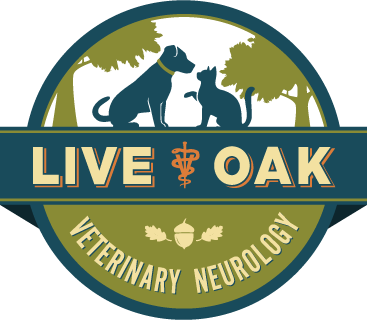Magnetic Resonance Imaging (MRI)
Our MRI is the most advanced device that is exclusively for veterinary use in the entire coastal region of Georgia and South Carolina! Only the veterinary schools at North Carolina State University and the University of Georgia have stronger magnets, and those are for research purposes. The strength of the magnetic field in our machine is measured at 1.5 T (Tesla). That’s roughly 5000 times the strength of the earth’s magnetic field at the equator!
It’s important to know that an MRI is unique amongst medical imaging tests in that it doesn’t use radiation. X-rays are radiation that is used to take x-ray films (radiographs) and acquire CT images (CAT scans). An MRI actually uses radio waves to get the images we use to make a diagnosis. For that reason, we have to have the MRI encased in a very special room to block any stray radio waves that might interfere with the test.
So, in spite of the fact that the MRI is a very special tool that can give us unparalleled insight into the anatomy and disease state of the body, the machine itself is very safe as long as you follow a few simple rules. We have to be very careful to take no metal into the magnet with us that might get pulled into the machine. Second, the magnetic coils inside the device have to remain very, very cold. In fact, a device runs constantly to keep liquid helium flowing around them at 4.2K (-269 C)!
The last things you need to know if you or your veterinarian think that your pet needs an MRI are that: MRI requires general anesthesia in our pets, and that MRI still has its limitations and isn’t always the best test for a specific disease.
Finally, while general anesthesia always carries a mild degree of risk (published complication rates approach 3%), monitoring a patient under anesthesia allows us to recognize these complications and intervene as soon as possible. This, then, makes anesthesia as safe as it can be. We have the most advanced and capable anesthesia monitoring available for use in an MRI setting. And we use it to watch your pet as closely as possible through the entire course of the procedure.
Consider as well that anesthesia is administered at different levels depending on how invasive or stimulating the procedure might be. This is called ‘anesthetic depth’. For an MRI, we use the lowest possible anesthetic depth because the only stimulation caused by the procedure is the noise produced by the machine itself. In fact, we even have ear plugs that we use to limit your pet’s exposure to the noise and further reduce the need for anesthesia!
Hopefully, this has given you a little more insight and understanding of what our MRI machine is and how it works. We’re very proud of it! But like any other tool, it is only as useful as the skilled individuals at the controls. If you’d like to know more about our machine, don’t hesitate to ask!


